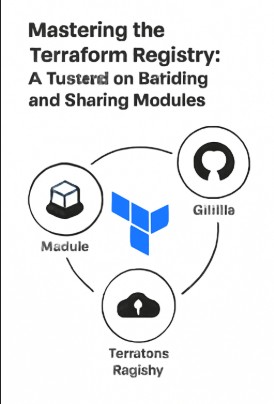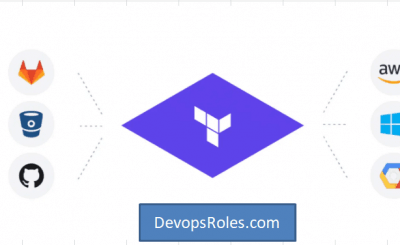Table of Contents
- 1 Introduction: Unlock the Power of Reusable Infrastructure with the Terraform Registry
- 2 Understanding Terraform Modules
- 3 Building Your First Terraform Module
- 4 Publishing Your Module to the Terraform Registry
- 5 Using Published Modules
- 6 Advanced Module Techniques
- 7 Frequently Asked Questions (FAQ)
- 8 Conclusion: Elevate Your Infrastructure-as-Code with the Terraform Registry
Introduction: Unlock the Power of Reusable Infrastructure with the Terraform Registry
In the dynamic world of infrastructure-as-code (IaC), efficiency and consistency are paramount. Terraform, a widely adopted IaC tool, allows you to define and manage your infrastructure in a declarative manner. However, writing the same infrastructure code repeatedly across projects can be tedious and error-prone. This is where the Terraform Registry shines. It’s a central repository for sharing and reusing pre-built Terraform modules, enabling developers to accelerate their workflows and maintain a consistent infrastructure landscape. This A Terraform Registry tutorial to build and share modules will guide you through the entire process, from creating your first module to publishing it for the community to use.
Understanding Terraform Modules
Before diving into the Registry, it’s crucial to understand Terraform modules. Modules are reusable packages of Terraform configuration. They encapsulate a specific set of resources and allow you to parameterize their behavior, making them adaptable to different environments. Think of them as functions for your infrastructure.
Benefits of Using Terraform Modules
* **Reusability:** Avoid writing repetitive code.
* **Maintainability:** Easier to update and maintain a single module than multiple instances of similar code.
* **Consistency:** Ensure consistency across different environments.
* **Collaboration:** Share modules with your team or the wider community.
* **Abstraction:** Hide implementation details and expose only necessary parameters.
Building Your First Terraform Module
Let’s start by creating a simple module for deploying a virtual machine on AWS. This A Terraform Registry tutorial to build and share modules example will use AWS EC2 instances.
Step 1: Project Structure
Create a directory for your module, for example, `aws-ec2-instance`. Inside this directory, create the following files:
* `main.tf`: This file contains the core Terraform configuration.
* `variables.tf`: This file defines the input variables for your module.
* `outputs.tf`: This file defines the output values that your module will return.
Step 2: `variables.tf`
variable "instance_type" {
type = string
default = "t2.micro"
description = "EC2 instance type"
}
variable "ami_id" {
type = string
description = "AMI ID for the instance"
}
variable "key_name" {
type = string
description = "Name of the SSH key pair"
}
Step 3: `main.tf`
resource "aws_instance" "ec2" {
ami = var.ami_id
instance_type = var.instance_type
key_name = var.key_name
}
Step 4: `outputs.tf`
output "instance_public_ip" {
value = aws_instance.ec2.public_ip
description = "Public IP address of the EC2 instance"
}
Step 5: Testing Your Module
Before publishing, test your module locally. Create a test directory and use the module within a sample `main.tf` file. Make sure to provide the necessary AWS credentials.
Publishing Your Module to the Terraform Registry
Publishing your module involves creating a repository on a platform supported by the Terraform Registry, such as GitHub.
Step 1: Create a GitHub Repository
Create a new public GitHub repository for your module. This is crucial for the Terraform Registry to access your code.
Step 2: Configure the Registry
You’ll need a Terraform Cloud account (or you can link a GitHub account via Terraform Cloud) to manage and publish your module. Follow the instructions on the official Terraform documentation to connect your provider with your repository.
[Link to Terraform Cloud Documentation](https://www.terraform.io/cloud-docs/cli/workspaces/create)
Step 3: Set up a Provider in your Module
Within your Terraform module repository, you should have a `provider.tf` file. This file defines the provider for your resources. It is not strictly necessary to include a provider in a module (your main `Terraform` file could specify it), but it is common practice.
Step 4: Submit Your Module
Through Terraform Cloud you submit your module for review. You’ll be prompted to provide metadata and other relevant information. Once validated and approved, your module will be available on the Terraform Registry.
Using Published Modules
Once your module is published, others can easily integrate it into their projects. Here’s how to use a module from the Terraform Registry:
module "aws-ec2-instance" {
source = "your-github-username/aws-ec2-instance" # Replace with your GitHub username and repository name
instance_type = "t2.micro"
ami_id = "ami-0c55b31ad2299a701" # Replace with a valid AMI ID
key_name = "your-key-pair-name" # Replace with your key pair name
}
Advanced Module Techniques
Let’s explore some advanced techniques to make your modules more robust and reusable.
Using Conditional Logic
Use `count` or `for_each` to create multiple instances of resources based on variables or conditions.
Creating Nested Modules
Organize complex infrastructure deployments by nesting modules within each other for improved modularity and structure.
Using Data Sources
Integrate data sources within your modules to dynamically fetch values from external services or cloud providers.
Versioning Your Modules
Proper versioning is essential for maintainability and compatibility. Use semantic versioning (semver) to manage releases and updates.
Frequently Asked Questions (FAQ)
**Q: What are the benefits of using the Terraform Registry over storing my modules privately?**
A: The Terraform Registry offers discoverability, allowing others to benefit from your work and potentially collaborate. It also simplifies module updates and management. Private modules work well for internal organization-specific needs.
**Q: How do I update my published module?**
A: Push updates to your source code repository (GitHub). The Terraform Registry will automatically process and release new versions.
**Q: Can I publish private modules?**
A: No, the Terraform Registry is publicly accessible. For private modules, consider using a private git repository and referencing it directly in your Terraform configurations.
**Q: What happens if I delete my module from the registry?**
A: Deleting the module removes it from the Registry, making it inaccessible to others.
**Q: How do I handle dependencies between modules?**
A: Terraform’s module system handles dependencies automatically, enabling effortless integration between various modules.

Conclusion: Elevate Your Infrastructure-as-Code with the Terraform Registry
This A Terraform Registry tutorial to build and share modules demonstrates how to create, publish, and use Terraform modules effectively. By embracing the power of the Terraform Registry, you can significantly improve your workflow, enhance code reusability, and foster collaboration within your team and the wider Terraform community. Remember to follow best practices like proper versioning and thorough testing to maintain high-quality, reliable infrastructure deployments. Using modules effectively and sharing them through the registry is a fundamental step towards achieving efficient and scalable infrastructure management.Thank you for reading the DevopsRoles page!
